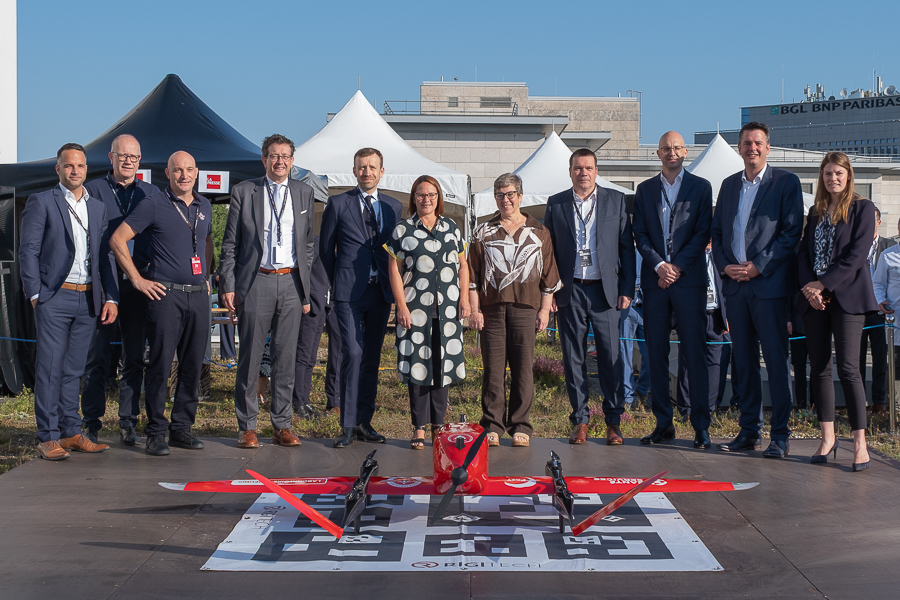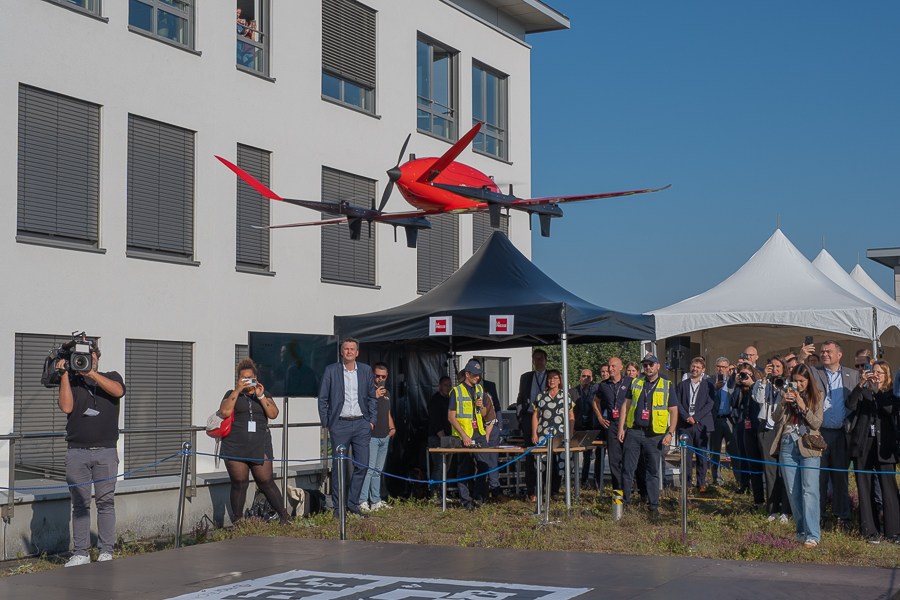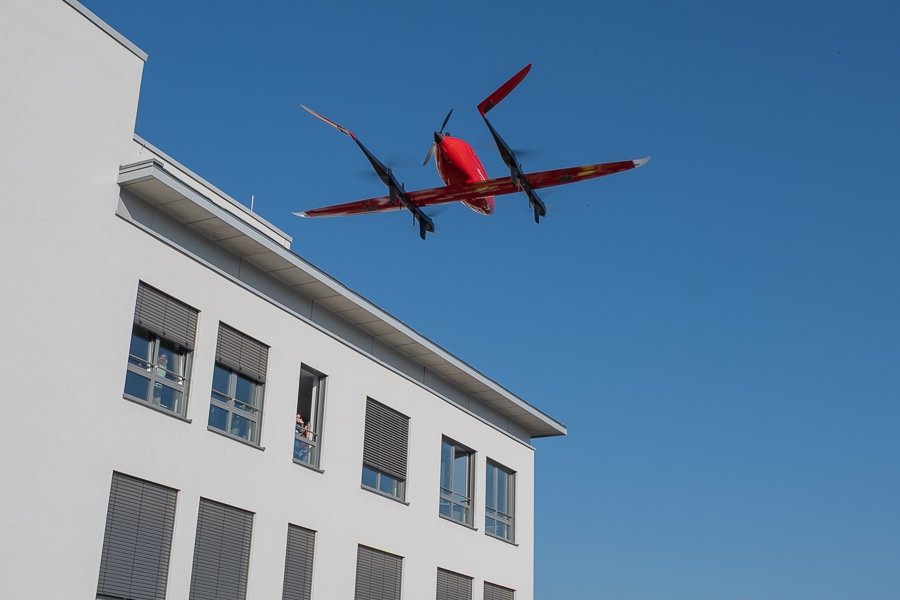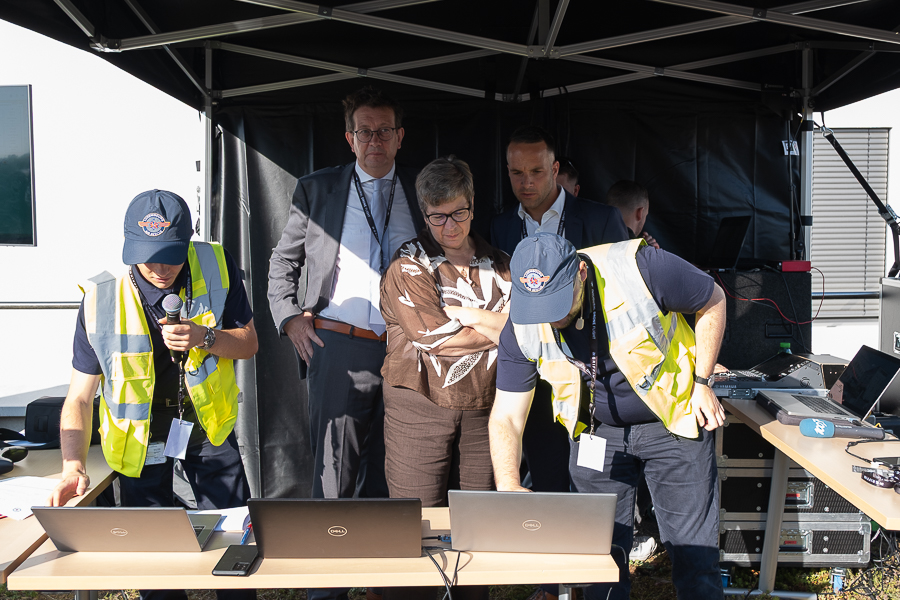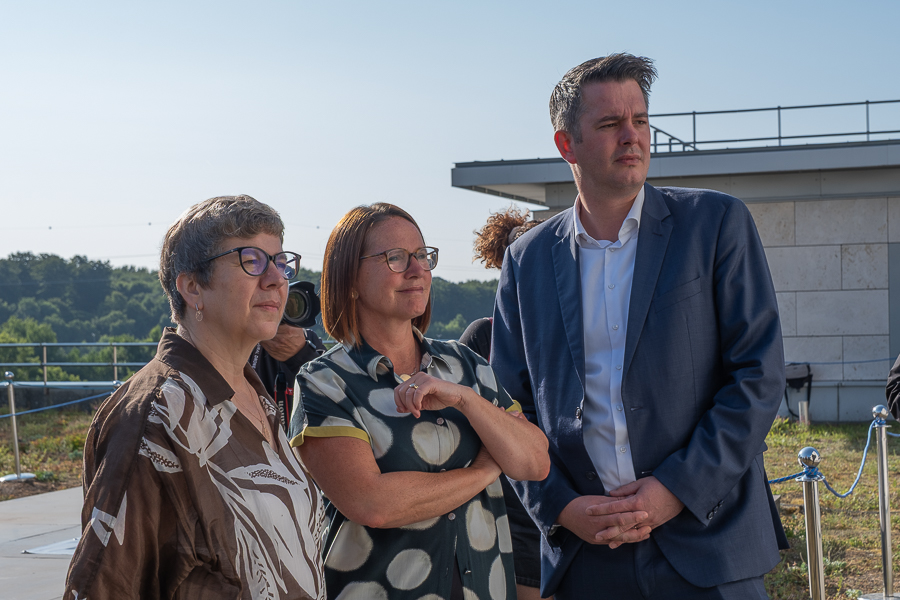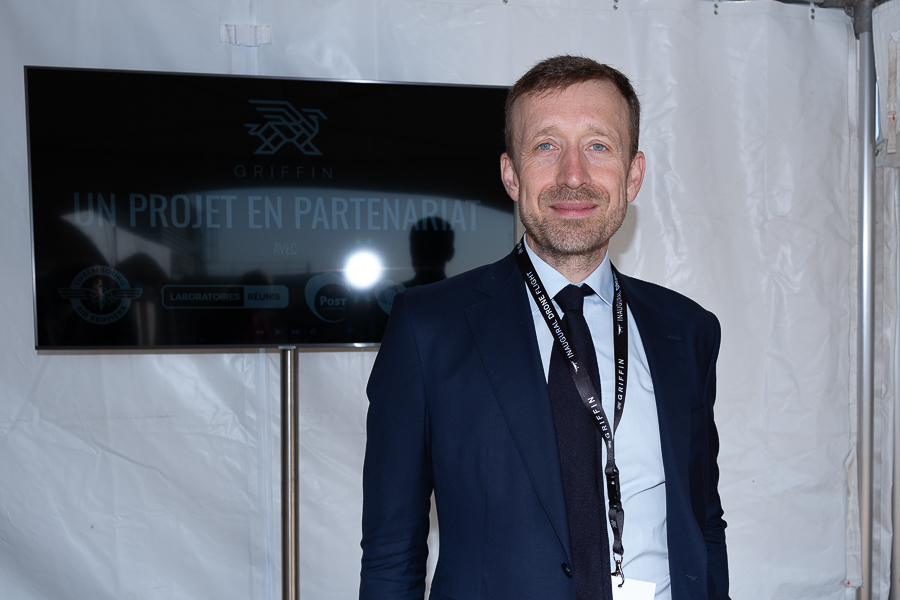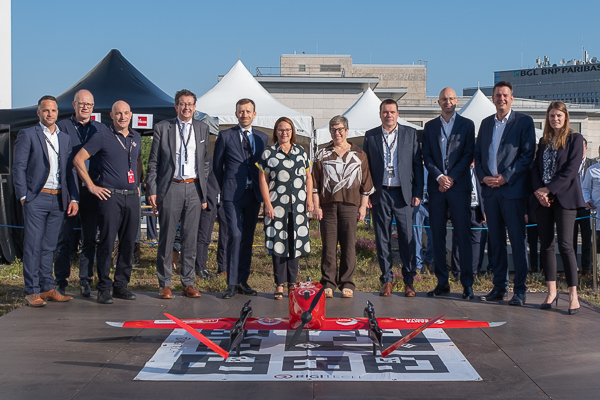 Credit: Ali Sahib, Chronicle.lu
Credit: Ali Sahib, Chronicle.lu
On the morning of Thursday 10 July 2025, the Griffin project consortium carried out its inaugural drone flight transporting a blood sample in Luxembourg.
The consortium, comprising Laboratoires Réunis, Luxembourg Air Services, POST Luxembourg and Santé Services, invited members of the press to witness the flight, which marked a significant milestone in medical logistics. The drone successfully transported a blood sample from Hôpitaux Robert Schuman (Hôpital Kirchberg) to Laboratoires Réunis in Junglinster.
The event took place on the hospital rooftop in the presence of Luxembourg’s Minister for Mobility and Public Works, Yuriko Backes, Minister of Health and Social Security, Martine Deprez, and Minister of the Economy, SMEs, Energy and Tourism, Lex Delles. Also in attendance were Laura Könner, Director of the Directorate of Civil Aviation (DAC), Maurice Bauer, Chief Alderman of the City of Luxembourg (VdL), and Ben Ries, Mayor of Junglinster.
Dr Marc Berna, Director General of Hôpitaux Robert Schuman (HRS) and President of the Board of Santé Services, delivered the welcome remarks. Luxembourg Air Rescue (LAR) representatives then guided guests through the drone flight process.
Following pre-flight safety checks, the drone took off from Hôpital Kirchberg at around 08:26 and landed in Junglinster at approximately 08:35. Guests were able to follow its journey on a large screen. LAR representatives explained the technical aspects of the operation, noting that the drone launched in multicopter mode before switching to fixed-wing mode to cover longer distances. In Junglinster, it transitioned back from fixed-wing to multicopter mode for a controlled descent and landing, using a QR code marker to identify the landing zone. The drone returned to the hospital rooftop at around 08:50.
The drone interface displayed the flight route, live status and operational parameters. The route was designed to avoid urban areas such as Gonderange, military zones such as Waldhof and motorways (highways). The dashboard includes modules for route creation, operations management, compliance monitoring and flight simulations. LAR representatives emphasised the importance of real-time monitoring of wind speed, battery level and other parameters in ensuring safe and compliant flights. Post-flight reports can also be generated.
Speaking to Chronicle.lu afterwards, Dr Marc Berna described the inaugural flight as a proof of concept - transporting a blood sample safely and efficiently from point A to point B - carried out in line with current regulations and available technology. He acknowledged certain challenges, including the proximity to Luxembourg Airport and the Waldhof military zone. Nevertheless, the inaugural flight showed that such transport is possible and represented "quite an achievement", as well as a good starting point for future developments in medical logistics.
Dr Berna noted the potential to transport other items such as small tissue samples or even medication in the future, as technological developments allow for greater capacity and fewer limitations - the current drone is particularly sensitive to weather conditions such as wind.
The successful inaugural flight will be followed by further development of the project (which launched in July 2023). The consortium plans to present a business case to determine whether the project is sustainable. It also hopes to attract additional partners in the future.
UPDATED to include additional information provided by LAR, the Ministry of Mobility and Public Works, the Ministry of Health and Social Security and the Ministry of the Economy: The drone used is an Eiger 03 model, designed by Swiss manufacturer RigiTech, and it runs entirely on electricity. It reaches a flight speed of about 100 km/h and can transport samples weighing up to three kilograms, including blood, serum, urine and other samples. The journey between Hôpital Kirchberg and Laboratoires Réunis in Junglinster takes approximately ten minutes, regardless of traffic.
In terms of sustainability and efficiency, the drone's energy consumption is only 0.7 kWh per 100 kilometres in horizontal flight. It produces no direct CO2 emissions during operation. Tests also revealed that the samples experience significantly less vibration in flight than during road transport. Each mission follows strictly enforced standardised operating procedures. Detailed emergency and diversion protocols are in place and can be activated both automatically and manually. All critical drone systems are backed up, minimising the risk of failure. To ensure increased safety, the drone flies only in secure virtual zones (geocages), defined in collaboration with the DAC. This prevents unauthorised overflights, particularly over populated areas. An integrated parachute system enhances safety in the highly unlikely event of technical failure.
Further tests are planned to further explore the potential of drone transport in practice, optimise operational procedures and evaluate its integration into daily medical practice.

